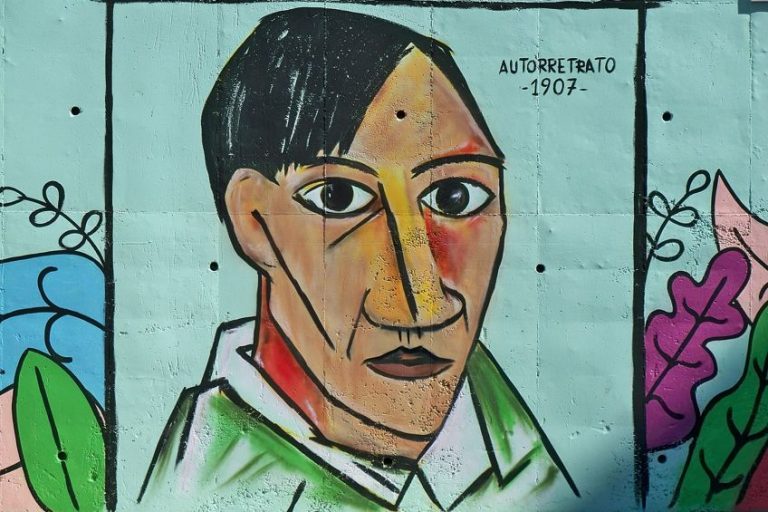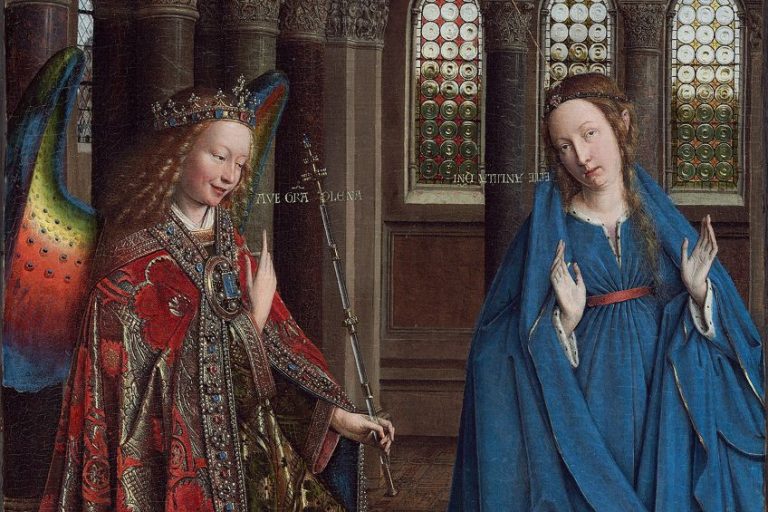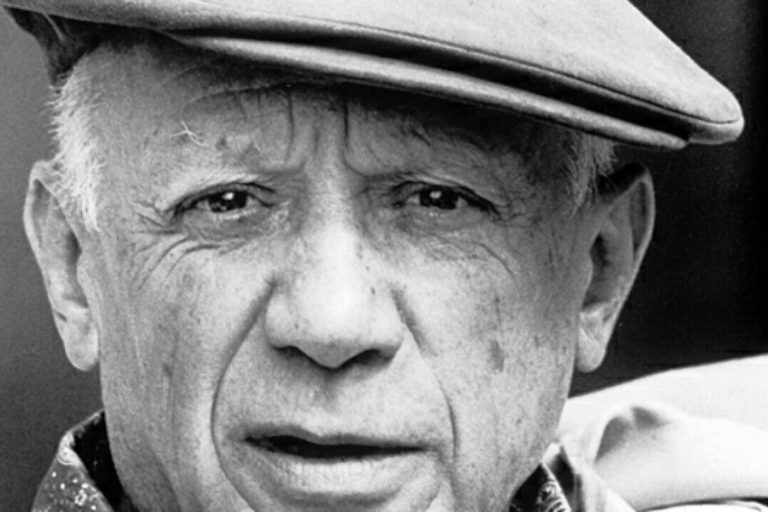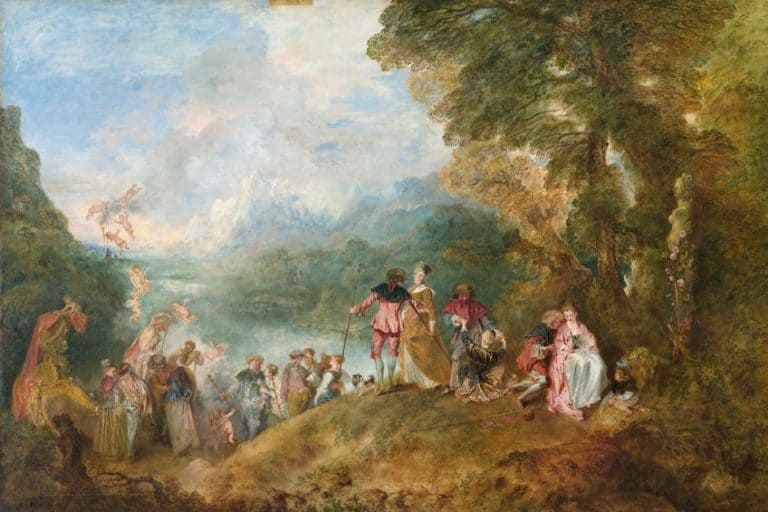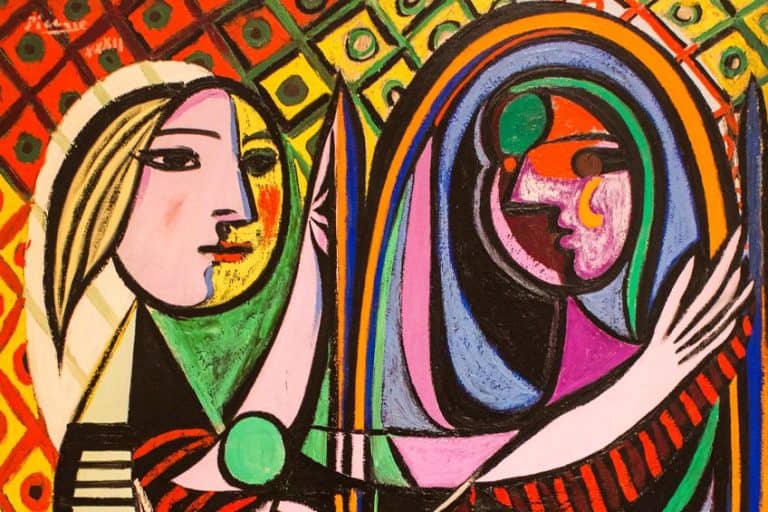“Eugenia Martinez Vallejo” by Juan Carreño de Miranda – A Look
The 17th-century Spanish girl, Eugenia Martínez Vallejo, suffered from a genetic disorder that drastically affected her weight gain. This made her an object of entertainment and ridicule in the Spanish royal court. It also made her an icon, raising awareness about what was socially acceptable at the time. Below, this article explores the two paintings of Eugenia by the Baroque painter Juan Carreño de Miranda.
Table of Contents
Artist Abstract: Who Was Juan Carreño de Miranda?
Juan Carreño de Miranda was born on March 25, 1614, and died on October 3, 1685. His birthplace was in Avilés Spain, and he died in Madrid. He was reportedly born from nobility. He painted in the Baroque art style and studied under artists like Bartolomé Román and Pedros de las Cuevas.
His artworks ranged from religious to portrait paintings, and his commissions included fresco paintings for the Alcázar Palace in Madrid, for which he was an assistant to.
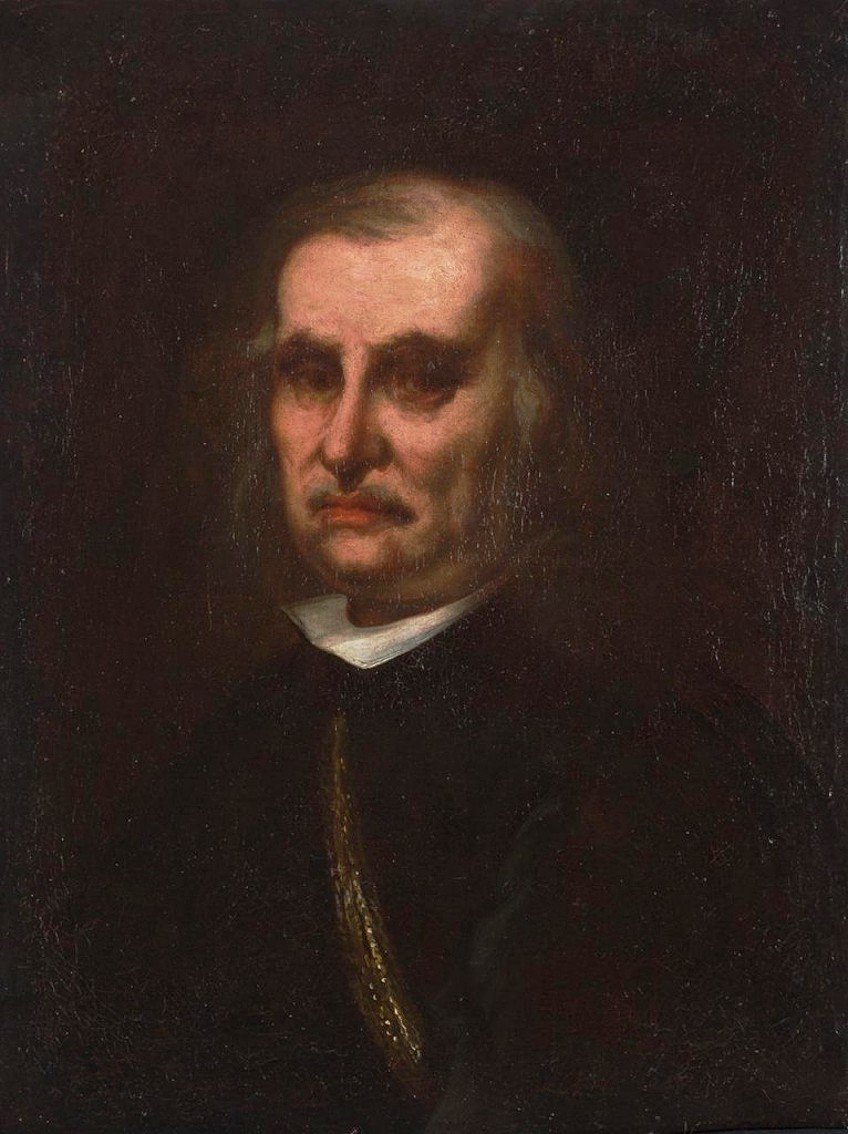
He also painted numerous portraits for the royal court, which he became well-known for. Several of his artworks include The Assumption of the Virgin (1657), Charles II of Spain (c. 1676), and Charles II of Spain (c. 1685).
Eugenia Martínez Vallejo by Juan Carreño de Miranda in Context
| Artist | Juan Carreño de Miranda (1614 – 1685) |
| Date Painted | 1680 |
| Medium | Oil on canvas |
| Genre | Portrait painting |
| Period/Movement | Baroque art |
| Dimensions (meters) | 165 x 107 (Clothed) and 165 x 108 (Naked) |
| Series/Versions | There are two portrait paintings of Eugenia Martinez Vallejo. One depicts her clothed, while the other depicts her naked. |
| Where Is It Housed? | Museo Nacional del Prado, Madrid, Spain |
| What It Is Worth | The price is uncertain. |
Juan Carreño de Miranda painted two portraits of Eugenia Martínez Vallejo, one of her clothed and one of her naked. These have also been titled The Monster, Nude painting and The Monster, Clothed, or in Spanish, La Monstrua Desnuda, and La Monstrua Vestida. This article will present a contextual analysis of both portraits, discussing who Vallejo was, where the paintings are held, and why they are, demeaningly, titled The Monster. A formal analysis will take a closer look at Juan Carreño de Miranda’s artistic style by describing the subject matter and art elements.
Contextual Analysis: A Brief Socio-Historical Overview
Eugenia Martínez Vallejo was a Spanish girl who was reportedly born in Bárcena in Spain in a church. She increasingly gained excessive weight as she grew older and reportedly died when she was 25 years old. It has been suggested that she could have had Prader-Willi Syndrome, which is a genetic disorder where certain genes are not active in chromosome 15. It reportedly disrupts metabolism and appetite causing excessive hunger and eating during the early years of childhood.
Reportedly, when Eugenia was around six years old, she went to Madrid because she was sought by King Charles II, who interestingly was also known for his disabilities. He commissioned the two portrait paintings of Eugenia, one clothed and one naked.
King Charles II reportedly mentioned what he wanted in the portrait paintings, stating that Eugenia be “attired decorously” and that her style is that “of the palace”. The king also wanted her to wear a “sumptuous dress with red and white brocade and silver buttons”.

Eugenia’s condition made her an object of curiosity for the masses during that time, but she was not the exception. During the 17th century, people with various deformities became objects of entertainment, notably in the royal court where Eugenia was undoubtedly gawked at. Reportedly, she was not given remuneration.
Eugenia was also written about during her time at the Spanish Royal Court.
Juan Cabezas described her, mentioning that her face was not “unpleasant” and “her head, face, neck, and other features” took up the size of “two men’s heads, or thereabout”. He also described that she walked with “effort” because of her size. She was also called “The Monster”, which was also the title for the two portraits of her. The sculptor Amado González Hevia created a bronze sculpture of Eugenia in 1997, which is in the city of Avilés in Spain. It resembles Eugenia with her long dress as seen in the portrait of her clothed.
Formal Analysis: A Brief Compositional Overview
In the formal analysis, you will read more about the Baroque portrait painting Eugenia Martinez Vallejo by Juan Carreño de Miranda, more specifically of the version of her clothed. There will be mention of the version of her naked for comparison purposes to highlight a few of the differences between the two paintings.

Subject Matter: Visual Description
Eugenia Martinez Vallejo, Clothed by Juan Carreño de Miranda depicts a full-length portrait of Eugenia when she was six years old. She stands as the centralized figure in the composition and there is nothing else visible around her. She is standing against a dark, blackish, wall, which composes most of the background. The lower portion of the composition reveals the floor, which is a lighter color, and it creates an open space in the immediate foreground.
Eugenia is facing us, the viewers. She is holding a red apple in her left hand, which is held up around her chest area; her right arm is lowered to her right side and her right hand appears to be empty.
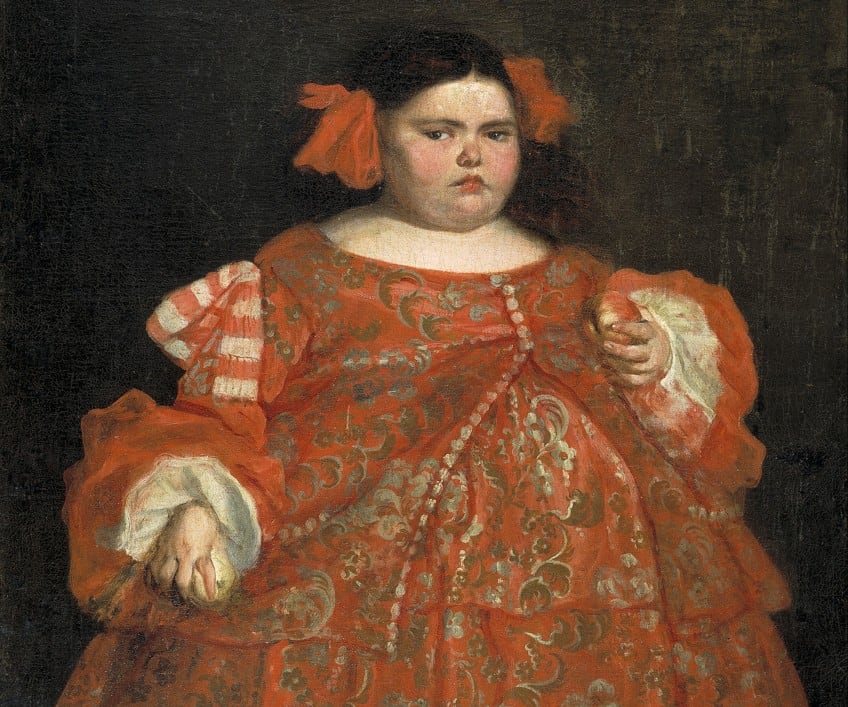
She is wearing a beautiful brocade dress that’s dominantly red with white and grayish floral, arabesque-like, patterns and what has been described as silver buttons. She has dark brown hair with two red hair pieces on either side of her head. Her lips also appear rouged, and her facial expression appears downcast.
A Little Bit More About Eugenia Martinez Vallejo, desnuda
Eugenia Martinez Vallejo, Naked depicts the naked figure of Eugenia also standing and viewed as a full-length portrait. She is holding a branch with grapes on it while its leaves cover her genitalia in her left hand. Her right elbow is resting on what appears to be a wooden block next to her and that is higher than her waist. She is also wearing a crown made of grape vines on her head. The background in this version is also neutral and dark, which highlights Eugenia as the central and primary subject matter.
In this portrait, Eugenia’s facial expression also appears downcast with her eyes focusing to her right (our left). There appear to be small pools of tears in her eyes, which are a testament to what she must have felt while being painted in the nude.
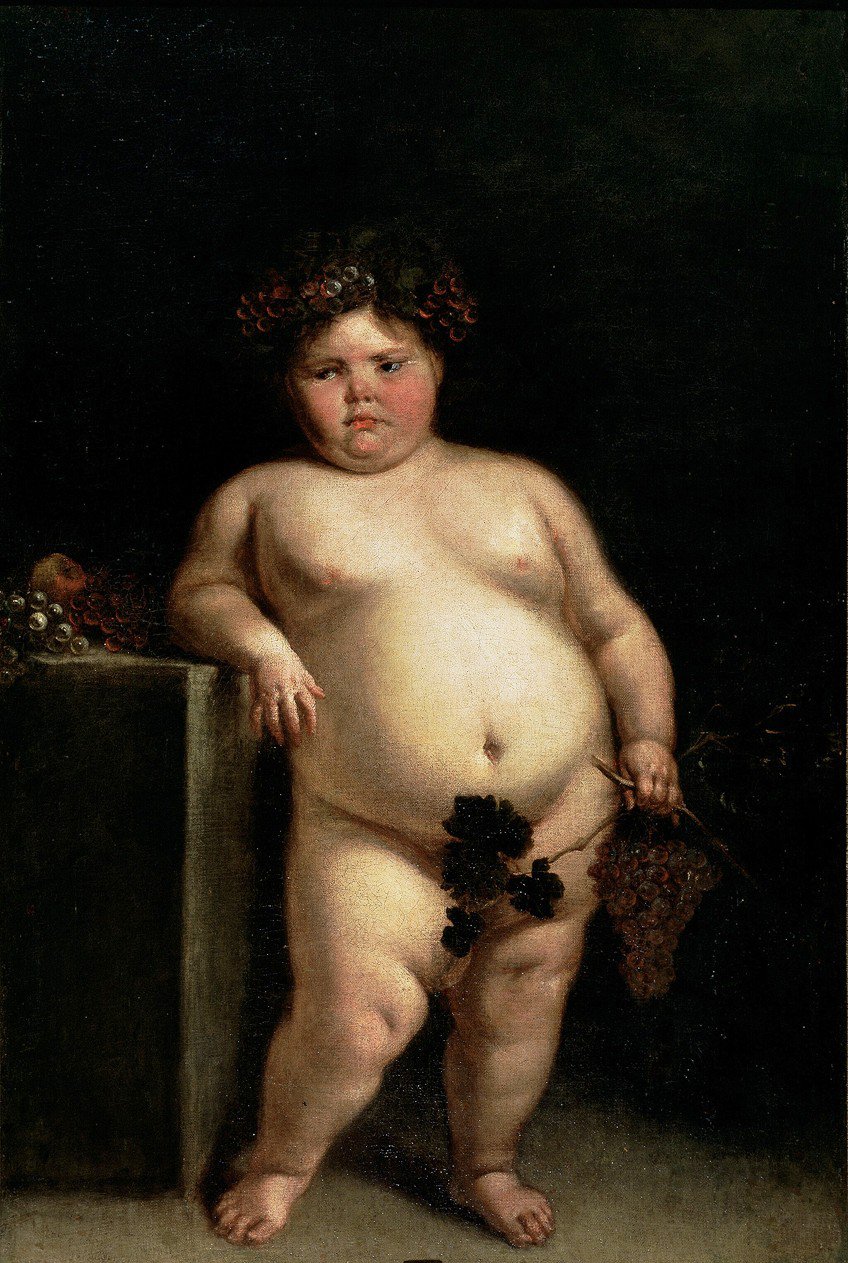
This also touches on the harsh reality of how Eugenia was exploited for entertainment purposes. The naked portrait of Eugenia has also been compared to the Roman god of wine, Bacchus, due to the grapes and leaves. This type of “costume” could have seemingly softened the harshness of Eugenia’s condition and standing in the nude by masking it with a resemblance to a mythological figure.
Color
The color scheme in Eugenia Martinez Vallejo, Clothed by Juan Carreño de Miranda appears limited to the neutral black of the background and what appears to be a brownish color of the floor. The neutral colors highlight the dominant red of the central figure of Eugenia. The red of Eugenia’s dress, including on her cheeks, creates a warmth to the color scheme of the composition.
On the front of Eugenia’s dress, there appears to be a lighter red color, which could convey a possible, unknown, light source.
Texture
Juan Carreño de Miranda’s brushstrokes are visible in his Eugenia Martinez Vallejo, Clothed painting, some appear smooth and other areas appear thicker. There is implied texture to provide the impression of the softness of the fabric’s folds or the smooth, scumbled-like, appearance of Eugenia’s skin.

Line
The type of lines in Eugenia Martinez Vallejo, Clothed by Juan Carreño de Miranda are free-flowing and organic, in other words, these delineate her form and the dress she wears, which consists of curved and irregular vertical lines.
Examples include the vertical lines created by the shadows of her dress’s folds or the thicker red and white horizontal lines on the pattern of the bow on Eugenia’s right shoulder.
Shape and Form
The dominant shapes and forms in Eugenia Martinez Vallejo, Clothed by Juan Carreño de Miranda are naturalistic and figurative due to the nature of the painting, which depicts a human figure. Examples of irregular shapes appear as the floral/arabesque shapes on Eugenia’s dress, including the circular shapes of the buttons, all of which are repeated and create a patterned effect. The artist depicted Eugenia’s body in an overall rounded shape, which contrasts with the more vertically rectangular shape of the canvas.

Space
The compositional space in Eugenia Martinez Vallejo, Clothed by Juan Carreño de Miranda depicts only the figure of Eugenia. The empty space in the immediate foreground provides a sense of spatial depth, but not too much.
The dark, and empty, background also brings the figure of Eugenia into focus.
A Tender Portrait Painting
Art history is a window into the past, giving glimpses of events and people that are sometimes light-hearted and sometimes heavier on the heart, the latter can apply to Eugenia’s life and her two portraits, The Monster, Nude painting, and The Monster, Clothed. It is important to note that Eugenia’s treatment during her life as a source of entertainment may have been commonplace in 17th-century society, but it also evoked a tender-heartedness in many throughout the centuries.

The two portraits titled “Eugenia Martinez Vallejo” by Juan Carreño de Miranda, one of her naked and one of her clothed, have become visual examples, raising awareness around the disorder that Eugenia experienced. It has also shone a light on the type of treatment that people who do not fit the “norms” of society are treated, whether through a disability or disorder; they become objects of entertainment and display.
Frequently Asked Questions
What Is The Monster, Nude Painting?
The Monster, Nude (c. 1680) is an oil on canvas by the Baroque painter Juan Carreño de Miranda. It measures 165 by 108 centimeters, and is housed at the Museo Nacional del Prado in Madrid, Spain. It depicts the 17th-century Spanish girl Eugenia Martínez Vallejo, who was known for her excessive weight gain, which was possibly due to a genetic/hormonal condition.
Who Is the Girl in the Painting Titled La Monstrua Desnuda?
Juan Carreño de Miranda’s La Monstrua Desnuda (c. 1680) depicts Eugenia Martínez Vallejo. She was a Spanish girl born in 1674. Her weight gain popularized her during her short 25 years. It is believed that she could have had Prader-Willi Syndrome, a disorder causing the malfunction of certain genes. The artist also painted a version of her wearing clothing.
How Many Versions of Eugenia Martinez Vallejo Did Juan Carreño de Miranda Paint?
There are two painted versions of Eugenia Martínez Vallejo, both painted around 1680 by Juan Carreño de Miranda. One depicts the girl naked and is titled La Monstrua Desnuda. In her left hand is a twig of grapes, with its leaves covering her genital area. The other painting, titled La Monstrua Vestida, depicts her clothed in a beautiful red dress.
Who Commissioned Eugenia Martinez Vallejo by Juan Carreño de Miranda?
The Spanish King Charles II commissioned the two portrait paintings of Eugenia Martinez Vallejo, and he employed the Spanish artist Juan Carreño de Miranda to paint them. The artist was already a court painter and known for his portrait paintings.
Alicia du Plessis is a multidisciplinary writer. She completed her Bachelor of Arts degree, majoring in Art History and Classical Civilization, as well as two Honors, namely, in Art History and Education and Development, at the University of KwaZulu-Natal, South Africa. For her main Honors project in Art History, she explored perceptions of the San Bushmen’s identity and the concept of the “Other”. She has also looked at the use of photography in art and how it has been used to portray people’s lives.
Alicia’s other areas of interest in Art History include the process of writing about Art History and how to analyze paintings. Some of her favorite art movements include Impressionism and German Expressionism. She is yet to complete her Masters in Art History (she would like to do this abroad in Europe) having given it some time to first develop more professional experience with the interest to one day lecture it too.
Alicia has been working for artincontext.com since 2021 as an author and art history expert. She has specialized in painting analysis and is covering most of our painting analysis.
Learn more about Alicia du Plessis and the Art in Context Team.
Cite this Article
Alicia, du Plessis, ““Eugenia Martinez Vallejo” by Juan Carreño de Miranda – A Look.” Art in Context. September 1, 2023. URL: https://artincontext.org/eugenia-martinez-vallejo-by-juan-carreno-de-miranda/
du Plessis, A. (2023, 1 September). “Eugenia Martinez Vallejo” by Juan Carreño de Miranda – A Look. Art in Context. https://artincontext.org/eugenia-martinez-vallejo-by-juan-carreno-de-miranda/
du Plessis, Alicia. ““Eugenia Martinez Vallejo” by Juan Carreño de Miranda – A Look.” Art in Context, September 1, 2023. https://artincontext.org/eugenia-martinez-vallejo-by-juan-carreno-de-miranda/.




